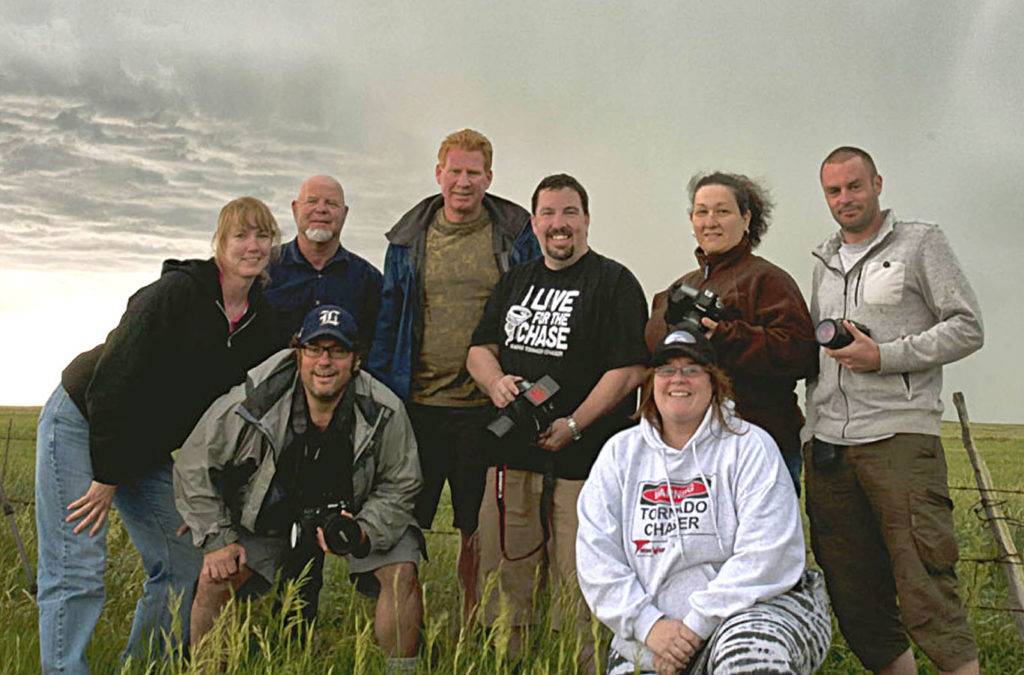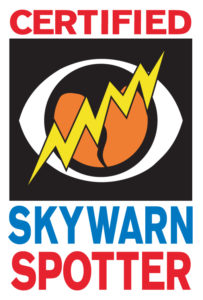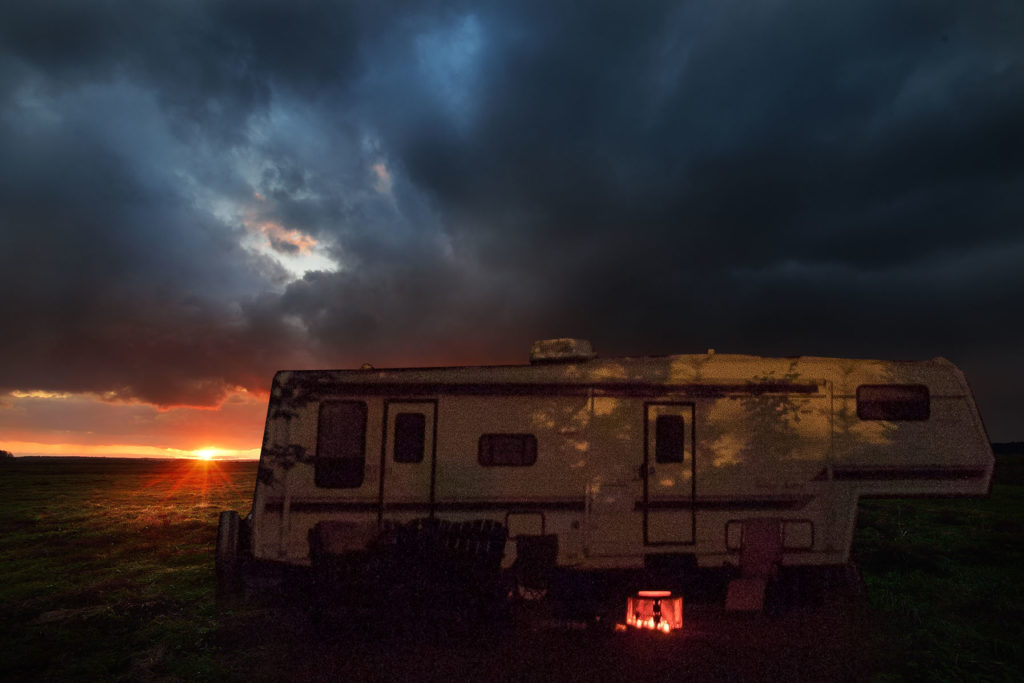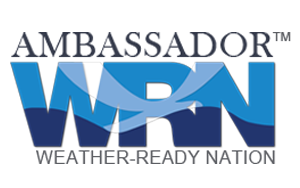There is absolutely nothing that will put you in your place like watching the power of a severe storm in action, and I think we could all use a shot of that kind of humility now and then. Especially the way the world is headed today, we all need to be reminded that it’s not all about us, and we are decidedly not in control.
But—as fascinating as it can be to watch—severe weather is no joke, especially to those of us who have only a couple inches of aluminum or fiberglass and foam insulation between us and the elements.
So many of us RV because we want to feel closer to nature, but severe weather is one facet I’m more than happy to keep some distance from. But yes, since you may be wondering, I do some storm chasing when the opportunity presents itself. However, I chase with professionals who know how to keep us out of danger. And when I do chase alone, I stay far away, and on the correct side of the storm so as not to get run over by it.

That’s me in the lower right, with my first-ever storm chasing group back in 2011. It was my 50th birthday present to myself. I thought I was just crossing something off my bucket list, but I ended up getting addicted to the adrenaline rush of storm chasing.
A Weather Weenie Is Born
I grew up in the Midwest, on the very edge of Tornado Alley, and was no stranger to frequent summertime tornado watches and warnings. They always scared me growing up. Then I spent the longest five minutes of my adult life, cowering in the basement while at least two twisters tore through my northern Wisconsin property in 1991. I knew I never, ever wanted to go through something like that again. I have never been so terrified.
Though it may seem dichotomous, I began chasing storms out of a sense of wanting to regain some control in those scary situations. I found that being in a moving vehicle, going after a storm, felt far safer and less terrifying than hunkering down in my basement, waiting for one to hit me.
 On a related note, I am a trained, certified SkyWarn Storm Spotter. I’m proud to do my part in being the eyes and ears of the National Weather Service, providing “ground truth” during severe weather with my reports.
On a related note, I am a trained, certified SkyWarn Storm Spotter. I’m proud to do my part in being the eyes and ears of the National Weather Service, providing “ground truth” during severe weather with my reports.
I first got certified in 2002, so I could do a better job being the Weather Coordinator and Public Information Officer for our local Emergency Management Agency, a post I held for 13 years. I have continued to participate in mandatory retraining every two years, to keep up my certification.
These days, I don’t do much chasing because it would be—let’s face it—pretty stupid to run after storms while towing my house on my back. But I do continue my spotting activities when possible on the road.
And that leads me to the reason I created this section of the site: I have realized the absolute need to educate nomads about the realities of severe weather on the road!
Weather for Nomads: Clobbering Cluelessness
I have been, frankly, absolutely appalled at the number of RVers, both full and part time, who seem to have absolutely NO CLUE about the danger posed to us by severe weather. The truth is that—more than just about anyone else—RVers are subject to the whims and whammies of Mother Nature, in the form of severe weather.
In fact, I originally had this page listed under the “Scary Stuff” subsection of this site, but I believe it’s important enough to warrant its own top-level section.
I’m sure you’ve all heard that mobile home parks are the worst place to be during severe storms, but I disagree. I say the worst place to be is an RV park or campground.
Think about it: Not only do we have the same characteristics that make mobile/manufactured homes vulnerable to high wind situations—lightweight dwellings not permanently anchored to the ground—but in general, ours are smaller, lighter, on wheels, and more easily tossed or rolled.

Forewarned is Forearmed
Then there’s the exacerbating factor: In my experience so far on the road, I’ve noticed that it’s a rare RV park or campground that provides adequate storm shelters for its guests. Many don’t even provide a “heads up” notice that the park may be located in an active weather zone, and what to do in case of severe weather. And that, my friends, is a problem.
It’s bad enough that campground shelters are either inadequate or completely nonexistent. But worse yet is the fact that most campground owners and campers themselves really don’t understand the conditions necessary to cause severe storms. So they don’t know what to look for in the environment, to monitor developing storms and stay out of their way. And they also seem, for the most part, oblivious to the many tools available to help us avoid the kind of contact with Nature that could be dangerous and even deadly.
So that’s what this section is about. I provide information here that will:
- Help RVers understand the dangers they face from severe weather, and the atmospheric conditions that allow its development
- Describe the visual cues to watch for on days when storms could be developing or imminent
- The best strategies to keep yourselves, your loved ones and your rigs out of harm’s way or, if necessary, as safely sheltered as possible from severe storms you can’t avoid
- Tools you can use to keep yourselves informed of developing dangerous weather situations that may affect your area
More:
Wildheart Wanders is a Weather Ready Nation Ambassador.
Weather-Ready Nation (WRN) is an initiative of the U.S. Department of Commerce, National Oceanic and Atmospheric Administration (NOAA), to strengthen partnerships with external organizations toward building community resilience in the face of increasing vulnerability to extreme weather and water events.

